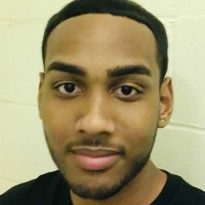Dear students,
Do you want to conduct research with me? My research topics include Smart Technology for Energy and Environmental Simulation:
Email me if you are interested!!
Dr. Nakamura

Dear students,
Do you want to conduct research with me? My research topics include Smart Technology for Energy and Environmental Simulation:
Email me if you are interested!!
Dr. Nakamura
Facility:
Location: Room V509 (Computer lab[classroom])
Space: 777 Square/foot
Student Occupancy: 20 people
Number of Computers: 21 computers for education
Equipment and Resouces:
1. CUNY High-Performance Computing Center, College of Staten Island (CSI), CUNY, for Environmental Simulation
https://www.csi.cuny.edu/academics-and-research/research-centers/cuny-high-performance-computing-center
2. Laptop computer for programming, and
3. Matlab for data visualization
Call for innovative ideas: any innovation or design for a product that can help to prevent coronavirus disease (masks, robots, drones, shields, bottles of hand sanitizers, devices, sensors, etc.) or to spend time usefully/productively at home during staying home (gym exercise tools, etc.). Any stages of the development process (brainstorming, hand drawing, computer graphics, 3D modeling) are welcome.
* You will have a chance to present your idea among design professionals and industrial design students as well as have feedback from them.
This design competition is held in conjunction with an IND 2410 Industrial Design II coursework project. It is open to everyone (not limited to CUNY’s City Tech and Brooklyn communities). Excellent designs will be recommended to present in a conference/startup event in the future.
Brainstorming and hand-drawing examples
=====================
Presentation slides for IND 2410 Industrial Design II coursework project
Download a PDF here: Industrial Design for Preventing the Coronavirus Disease406
#Engineering #students have selected @elonmusk’s Space X and Tesla as the most attractive #employers in the #UnitedStates, according to @UniversumGlobal
Also, USEPA (18th) and DOE (23th) are ranked in the top 30. Energy and Environment are topics they wish to work on.
Top10:
@SpaceX @Tesla @Google @Boeing @NASA @LockheedMartin @Apple @Microsoft @amazon @exxonmobil
via https://www.teslarati.com/tesla-spacex-best-employers-2019-elon-musk
We have to use #renewable #energy for training #ArtificialIntelligence (#AI).
Training artificial intelligence is an energy intensive process. New estimates suggest that the carbon footprint of training a single AI is as much as 284 tonnes of carbon dioxide equivalent – five times the lifetime emissions of an average car.
Emma Strubell at the University of Massachusetts Amherst in the US and colleagues have assessed the energy consumption required to train four large neural networks, a type of AI used for processing language.
Language-processing AIs underpin the algorithms that power Google Translate as well as OpenAI’s GPT-2 text generator, which can convincingly pen fake news articles when given a few lines of text.
 New Scientist Magazine issue 3234 , published 15 June 2019
New Scientist Magazine issue 3234 , published 15 June 2019
EESL students completed a short course of the CUNY i-corps program for #startups#startuplife #smarttechnology #stem #steam#robotics #cunyicorps
at Advanced Science Research Center at The Graduate Center, CUNY.
Day 1
Day2
Last day
Finale

I’m Ryan Redhead, a research assistant at the Energy and Environmental Simulation Laboratory (EESL). I am a Mechanical Engineering major at New York City College of Technology and I am interested in turning waste to energy. What I can bring to the group, in particular, will come in the form of knowledge in Mechanical Engineering. This research seems particularly interesting to me since so much waste is produced by people. This waste is taking up space and not being utilized in the world to its full potential. To me, waste seems like an abundant untapped resource. If we can find a way to harness energy from waste, the possibilities would be endless. I am excited to learn more about research in general and the topic of turning waste into energy.

Following a deep discussion about gun violence in the U.S and a series of mass shootings that have taken place between 1983 -2012 totaling 78, some key take aways are:
What does the literature tell us?
What can we do to make a change?